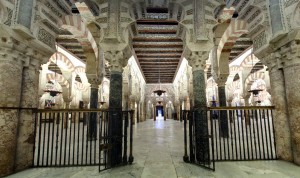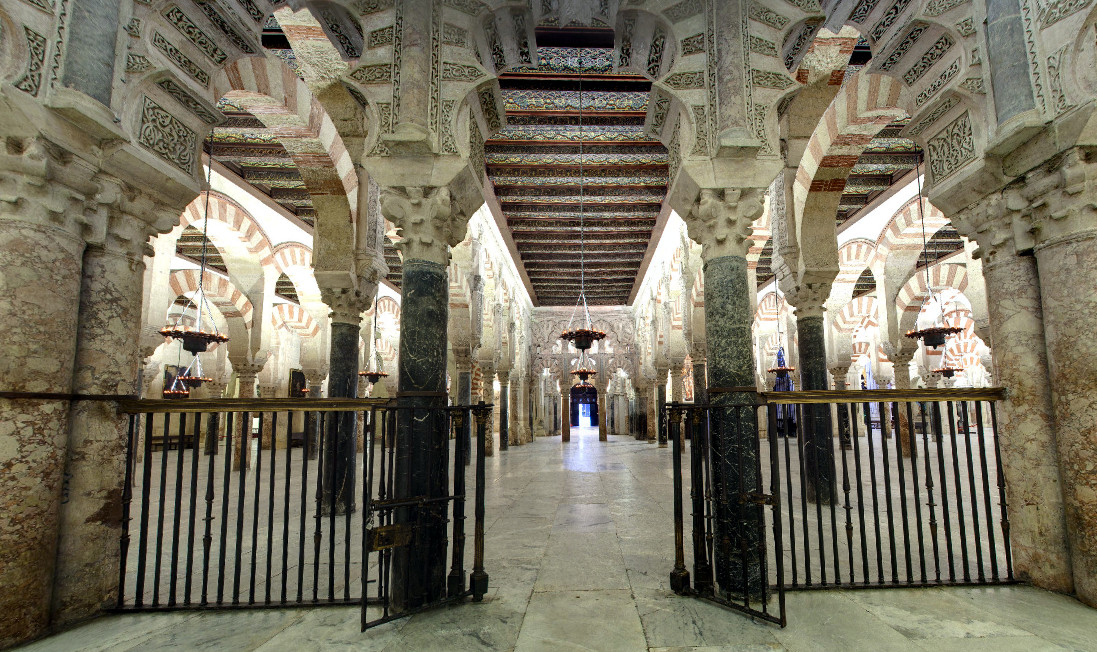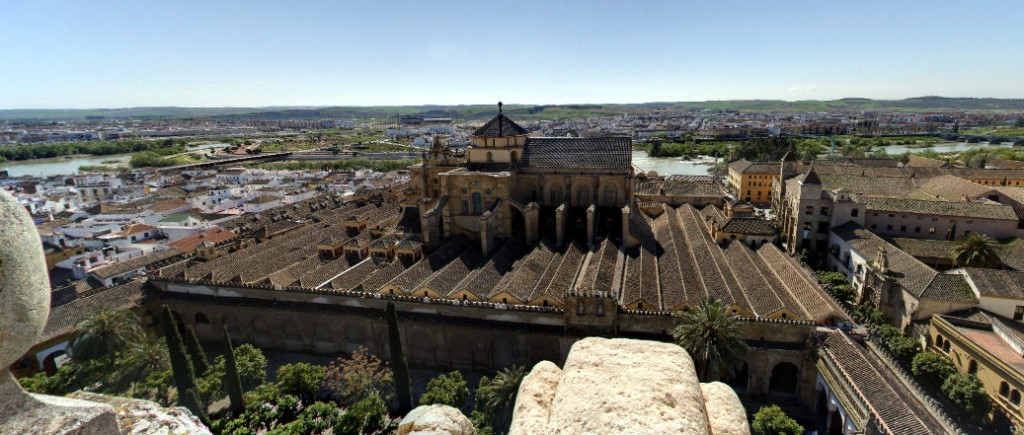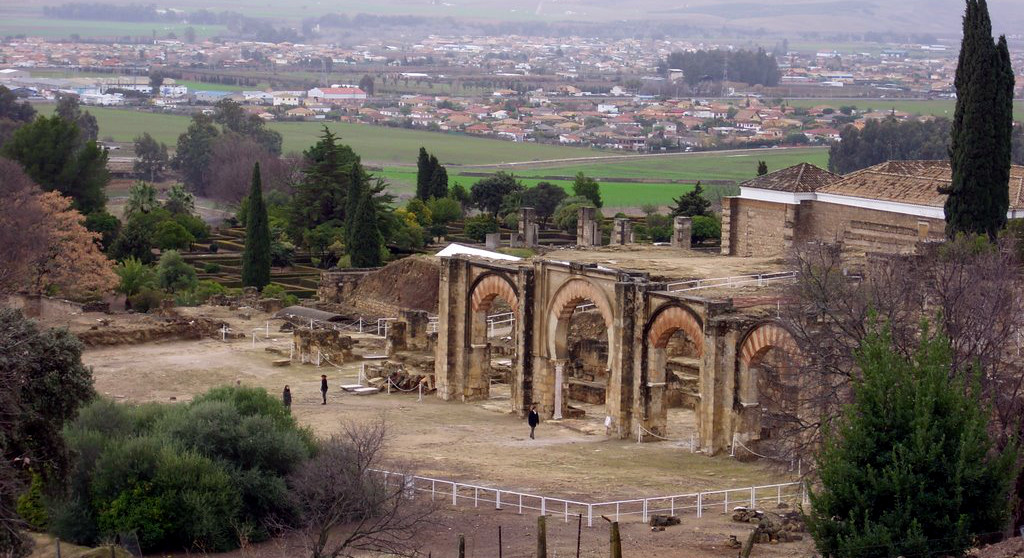The Mosque-Cathedral of Cordoba (La Mezquita de Córdoba) situated near the Guadalquivir river is one of the most remarkable and tourist places in Spain and in the world, and the most emblematic building in Córdoba city. The Mosque of Cordoba is the symbol of the Andalusí art, one monument that remind us of the art and great power of the Caliphate of Cordoba during the 9th and 10th centuries.
The Mosque of Cordoba was declared a World Heritage site in 1984 by UNESCO.
History of the Great Mosque of Cordoba
The construction of the amazing Mosque in Andalusí style began in 786 on a Visigoth church (dating in the 6th century) destroyed by order of Abderraman I (Abd ar-Rahman) (born in 731 in Damascus and died in Córdoba in 788) who wanted a great Mosque in Córdoba. In fact, he had bought the Visigoth Saint Vicente the Martyr basilica in order to built the first Mosque aljama in Córdoba in the same place.
The Great Mosque aljama was built in different stages: Abderraman I who founded the dynasty Omeya (Umayyad) began the construction in 786; his son Hixem I (757-796) built the first minaret; Abderraman II (792-852) added eight rows; Abderraman III (891-961) constructed a new minaret in the 10th century; his son Alhaken II (915-976) added twelve naves and decorated the mihrab in the 10th century; the last construction was by Almanzor (Al-Mansur) (938-1002) who added eight naves at the end of 10th century.
 The great Mosque of Córdoba became the second largest Mosque in the world after the Mecca Mosque in Saudi Arabia until 16th century when was built the Blue Mosque in Istanbul (Turkey).
The great Mosque of Córdoba became the second largest Mosque in the world after the Mecca Mosque in Saudi Arabia until 16th century when was built the Blue Mosque in Istanbul (Turkey).
In 1236 Fernando III king of Castilla and León known as the Saint (1199-1252) conquered Cordoba, and the Great Mosque was converted into The Cathedral of Cordoba.
Unfortunately in 1523 inside the Great Mosque was begun to build the main chapel in Renaissance style, the transept and the choir of the cathedral until 17th century, and as a result part of the Great Mosque constructed by Abderraman II and Armanzor was demolished to built the current cathedral. Moreover, the minaret built by Abderraman III was cover by the new baroque bell tower which was constructed in the 16th century although it is said that the minaret is still underneath the Christian bell tower.
Therefore Charles I of Spain and V of Germany the Emperor (1500-1558) regretted having allowed the bishop of Cordoba to build inside the Great Mosque.
Visiting the Mosque-Cathedral of Cordoba
Nowadays, the Mosque- Cathedral of Cordoba has more than 800 granite, jasper and marble columns with double horseshoe arches, an beautiful orange tree courtyard, the incomparable miharb which is a masterpiece, the Chapel of Villaviciosa, other outstanding chapels, the beautiful choir, the bell tower and too beautiful artworks to see in only a visit.
In conclusion, the Mosque-Cathedral covers a quadrangular area of more than 23,000 m2 full the interesting artworks. Do not leave without visiting the Mosque of Cordoba.
In addition, People interested in night tour can visit the Mosque-Cathedal during the night because there are several guided visits in the evening and during the night. Although the visit takes place in groups about 80 people, it had better book the ticket in advance to avoid the wait and spend the free time strolling in its surroundings. It will be an unforgettable experience to know better this unique Mosque-Cathedral in Andalusí art.
The visit costs between 9 and 18 euros and it takes about one and a half hour the guided visit. By the way, visitors can enjoy the Mosque more if they border the building to admire its more the 15 doors in its facades.
More places to visit in Cordoba
– Medina Azahara: Medina Azahara was a luxury wall city situated on a hill to 8 km away from Cordoba. It was begun its construction in 936 by Abderraman III and finished by his son Alhaken II with the finest decoration in Andalusi style.
Read also our recommendations about Granada and Seville and our list with the best cities and destinations of Spain.


